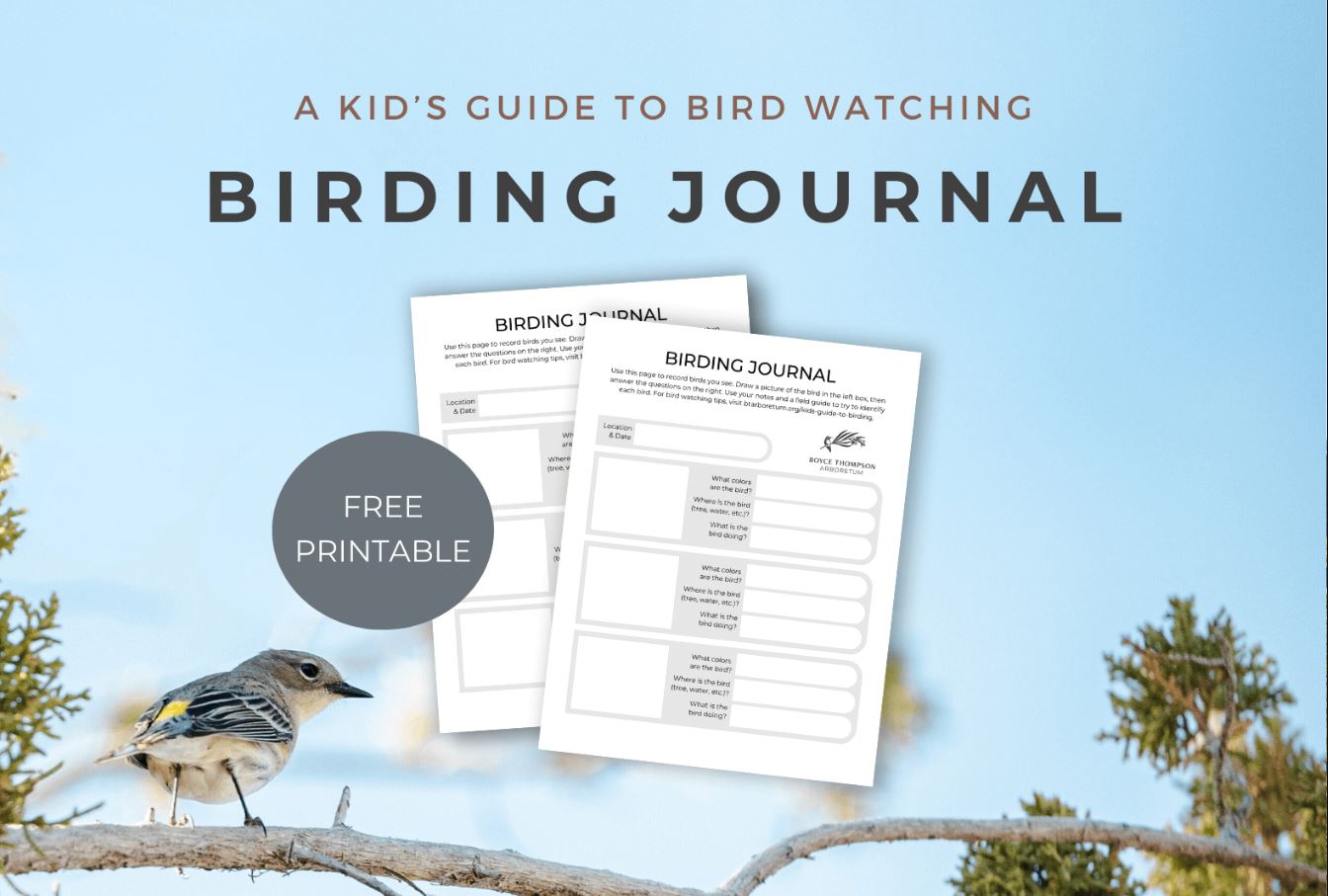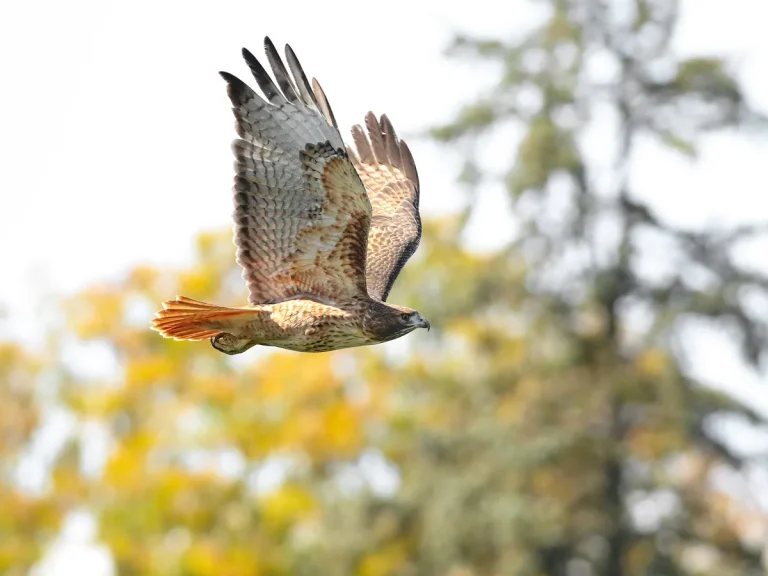The Ultimate Guide to Bird Watching Journals: 8 Reviews You Can’t-Miss
“the 8 best bird watching journals” highlights the industry’s most outstanding products with in-depth reviews and product features. This comprehensive article offers an excellent starting point for individuals interested in bird watching.
From the birding-friendly layout to the quality of pages and cover materials, this article covers a wide range of bird-watching journals to choose from. Bird-watching enthusiasts know that keeping a detailed journal with all their bird sightings is a useful tool for tracking bird species, locations, and behavior.
That’s why we have created a comprehensive guide to help you find the best bird-watching journal for your needs. In this article, you’ll find reviews of eight high-quality bird-watching journals, along with their unique features, pros and cons, and suitability for various bird-watching styles. Whether you’re a beginner or an experienced birder, this guide is sure to help you find the perfect journal to accompany you on your birding adventures.
How To Choose The Best Bird Watching Journal
Factors To Consider When Choosing A Bird Watching Journal
When choosing a bird-watching journal, there are a few factors that you should consider to make sure you get the most out of your journaling experience. Here are the key things to think about:
- Size: Do you want a small journal that can fit into your pocket or a larger notebook that allows more space for notes? Consider how much space you will need to record all the information you want.
- Paper quality: High-quality paper is important for preventing your notes from smudging or bleeding through the page. Consider thicker paper that can handle different writing materials, like pens or pencils.
- Binding: There are several binding options available, including stitched, glued, or spiral. Choose one that will withstand outdoor conditions and usage without falling apart.
Comparison Of Popular Journal Brands And Features
There are a variety of bird-watching journal brands available on the market, each with its own features and benefits. Here is a comparison of some of the most popular ones:
- Rite in the rain: This brand is known for its weather-resistant paper that can withstand rain or snow. They also have different page layouts to suit different recording needs.
- Moleskine: A classic brand, Moleskine offers high-quality paper and durable binding. They also come in a variety of sizes and colors.
- Leuchtturm1917: This brand offers numbered pages for easy organization, a table of contents, and durable binding. They also have a wide range of colors to choose from.
- Field notes: For those who prefer a smaller journal, field notes offer pocket-sized options with different page layouts to choose from.
- National Geographic: This brand offers guided journal pages with prompts for specific bird-watching information. They also have a tough, flexible cover for protection against outdoor elements.
- Princeton architectural press: This brand offers creative, visually appealing bird-watching journals with illustrations and space for free-form note-taking.
- Writing maps: For a unique option, writing maps offers bird-watching journals with maps of various locations included, as well as creative prompts for writing about each bird sighting.
- Chronicle books: This brand offers beautiful, artistic journals with creative prompts for recording bird sightings and experiences.
When deciding which brand to choose, consider which features and layouts will fit your individual needs as a bird watcher.
Top 8 Bird-Watching Journals Reviewed
Review Of Top 8 Bird-Watching Journals On The Market
Bird watching is a hobby that rewards outdoor enthusiasts by showing them the beauty and majesty of birds in their natural habitats. Bird watchers are known for keeping journals to document their sightings of different species, events and observations. Bird watching journals are an amazing tool that can help you keep track of your sightings, compare them with those of other enthusiasts, and keep a record of how different birds behave over time.
To help you choose the best journal to keep, we have compiled reviews of 8 amazing bird watching journals, each with its own unique features, pros and cons.
Detailed Analysis Of Each Journal’S Features, Pros And Cons
Here is a detailed analysis of each of the top bird-watching journals we reviewed:
- Rite in the rain journal: This model is ideal for bird watchers who usually go out in humid and rainy conditions. It’s durable, resistant to water and still maintains the quality of its pages. It has a ring-bound design, and a hardcover, making it easy and comfortable to use. However, it’s relatively expensive, has fewer pages, and lacks a table of content section.
- Thames & Kosmos 642112: The Thames & Kosmos 642112 model is perfect for casual bird watchers as it has ample space to write observations and descriptions and draw sketches. It also includes a beginner’s guide to bird-watching, a bird feeder, and protective gloves. It’s made from eco-friendly materials, and there are inspiring quotes from ornithologists and nature enthusiasts. However, it’s relatively bulky, may not include all bird species around you, and it’s not easily accessible in the market.
- National geographic field guide to Birds of north america: This journal is perfect for bird watchers who travel frequently, as it covers most of the species found in north America. It includes identification guides, maps, and a checklist of birds from all regions. It also has good-quality pictures, and there’s ample space for notes. However, it’s a bit bulky and expensive, lacks in-depth information on bird behaviors, and may overwhelm beginners.
- Birds of north america journal: This journal has a beautiful design with stunning illustrations. It offers a variety of layout options and includes a checklist of the most common birds in north America. The paper quality is excellent, and it’s eco-friendly. It’s sizeable and can be carried along without creating a burden, weighs 1 pound, and includes 140 pages. However, it’s relatively expensive and lacks any instructions or guidelines for beginners, such as identifying birds.
- Leuchtturm1917 a5 wildlife journal: The leuchtturm1917 a5 wildlife journal is an excellent option for those who want a journal with a classic design, quality paper, and enough space to take notes. It’s also relatively easy to access in the market, and there’s a variety of color options. It has a contents page, numbered pages, labels, and a durable cover. It’s also eco-friendly. However, it’s a bit expensive, and it has a limited amount of space, so it may not be suitable for extended trips to forests or national parks.
- Bird-watching journal by nifty gifts: This journal has a beautiful design and layout, with a good number of pages and space for taking notes. It also has a table of content section, bird species classification, diagrams for different species, labels, and a hardcover, making it durable and comfortable to use. It’s relatively affordable and available in the market. However, it’s relatively bulky to carry around and may lack enough information or guidelines for professional bird watchers.
- Bird-watching journal by happy books hub: This journal has colorful illustrations and ample space for writing down observations and experiences of bird watching. It’s ideal for beginners in the bird-watching hobby. It includes bird-watching guides for beginners, a checklist of the most common species, and a section for recording bird behaviors that are observed. It’s easy to use and relatively affordable. However, it may not include all bird species around you, and the cover may be too lightweight.
- Bird-watching journal by dharmacrafts: The bird-watching journal by dharmacrafts is an excellent option for bird watchers who prefer more compact journals but still want to keep track of their bird-watching experience. It includes a pocket in the back for storing notes and a cover with a soft and comforting touch. It’s eco-friendly and easy to carry, ideal for impromptu bird watching. However, it may not have enough space for recording long accounts or drawings, and it may be limited in the market.
Comparison Chart For Easy Reference
Here is a comparison chart of the essential features, pros, and cons of the top 8 bird-watching journals we just reviewed:
| Journal Name | Key Features | Pros | Cons |
|---|---|---|---|
| Rite in the Rain | Ring-bound, hardcover, resistant pages | Supplies excellent quality in humid, rainy areas | Fewer pages, lack of table of contents, relatively expensive |
| Thames & Kosmos | Beginner birding guide, bird feeder, gloves | Eco-friendly materials, plenty of space | Bulky, limited bird species, not widely available in the market |
| National Geographic | Identification guides, maps, checklist | Covers most species in North America | Expensive, lack of information on bird behaviors, overwhelming |
| Birds of North America | Checklist, stunning illustrations | Beautiful design, eco-friendly, plenty of space | Lack of beginner instructions, relatively expensive |
| Leuchtturm1917 | Contents page, labels, durable cover | Classic design, quality paper, enough space | A bit expensive, limited amount of spaciousness |
| Bird Watching Journal by Nifty Gifts | Table of contents, classification, diagrams | Durable with comfortable hardcover, affordable | Relatively bulky, relatively short on information |
| Bird Watching Journal by Happy Books Hub | Bird watching guides, ample space | Colorful illustrations, guides for beginners | Limited to some common species, flimsy cover |
| Bird Watching Journal by Dharmacrafts | Pocket in the back, soft cover | Compact journal, comforting cover, eco-friendly | Limited space, difficult to get, no beginner guidelines |
These are the top-rated bird watching journals analyzed and reviewed to help choose the best one for you.
How To Start A Bird-Watching Journal
Tips For Starting A Bird Watching Journal
If you’re new to bird watching, keeping a journal of your observations can be an excellent way to keep track of your sightings and progress. Here are some tips for starting a bird watching journal:
- Record the date and location of your observation: Write down the date, time, and location every time you see a new bird to keep track of where and when you’ve spotted them.
- Write a brief description of the bird: Include details such as the bird’s size, color, and markings, as well as any distinctive sounds or behaviors you observed.
- Use sketches or photos: Make sketches or take photos of the birds you observe to help you remember them, especially if you’re having trouble identifying them.
- Organize your entries: Consider organizing your observations by location, season, or type of bird to keep your journal neat and easy to reference.
Sample Journal Entries For Inspiration
If you’re struggling to get started with your bird-watching journal, here are some sample entries to help inspire you:
- February 15, 2021, central park: Saw a large bird with a distinctive red crest on its head. It had a white chest with dark spots and a long, curved beak. Took a photo and later identified it as a pileated woodpecker.
- April 3, 2021, local nature reserve: Observed a small, brightly colored bird with blue and orange feathers. It had a long beak and was pecking at the ground for insects. Identified it as a blue-headed vireo.
- May 10, 2021, backyard: Watched a pair of robins building a nest in a tree. It was fascinating to see them collect twigs and grass to construct their home.
Remember, your bird-watching journal is for you to use and enjoy. Feel free to add your own personal touches, such as decorating your pages with sketches or stickers. Happy bird watching!
Creative Ways To Use Your Bird-Watching Journal
Bird watching is a beloved hobby for many people, and it can be a rewarding experience to observe these beautiful creatures in their natural habitat. A bird-watching journal is an essential tool for birders, allowing them to keep track of their sightings and record important data.
However, there are many creative ways to use your bird-watching journal aside from just logging sightings. Here are some tips on how to make the most out of your journaling experience.
Other Ways To Utilize Your Bird Watching Journal (E.G., Sketching, Data Analysis, Reflection)
- Sketching: If you have an artistic side, try illustrating the birds you see in your journal. You don’t have to be a professional artist to sketch in your journal; even simple drawings can enhance your journal’s overall appearance. Sketching is an excellent way to get a closer look at the bird’s features and can be a relaxing and fun way to document your bird watching experiences.
- Data analysis: While logging your bird sightings is the main purpose of bird-watching journals, you can take data analysis a step further. Try analyzing the data you’ve collected to identify patterns and trends over time. By doing so, you can gain insight into which birds are most commonly spotted in your area during certain times of the year, for example. This information can be useful for tracking changes in bird populations over time.
- Reflection: A bird-watching journal can be a personal reflection of your bird-watching experiences. Write down your thoughts and feelings about a particular sighting, the weather, or the scenery. Reflecting on your experiences can help you appreciate them more and gain a deeper appreciation for the natural world.
Expert Tips For Making The Most Out Of Your Journaling Experience
- Customize your journal: Make your journal unique by adding stickers, photographs, and other personal touches. Not only will it make your journal visually appealing, but it can also make it more personalized to your preferences.
- Use different colored pens: Using different colored pens can help you keep track of different information, such as a bird’s location, behavior, and other details you want to record. This helps to keep your journal organized and easy to read.
- Take notes as soon as possible: It’s easy to forget important details about a bird sighting if you don’t write them down right away. Make sure to take notes as soon as possible to ensure accuracy, and include all relevant details such as the time of day, the weather, and the bird’s behavior.
- Be consistent: Make sure to maintain a consistent style of note-taking and data collection in your journal. This helps with organization and makes it easy to read and understand later on.
- Share your journal: Consider sharing your journal with other birders or online communities. Sharing your observations and experiences can be a great way to connect with others who have the same interests as you.
- Keep your journal accessible: Make sure to keep your journal where you can easily access it when you’re out bird watching. This may be in a backpack or in your pocket, depending on your preference. Having your journal on hand ensures you can record all the details of a sighting as soon as possible.
A bird watching journal is a valuable tool for birders of all levels. Whether you’re a seasoned expert or just starting out, there are many ways to get creative with your journaling experience. By taking advantage of these tips and incorporating them into your journaling routine, you can make the most out of bird watching and have a fun and rewarding experience.
Different Types Of Bird Watching Journals
Bird watching is a captivating hobby, and anyone who enjoys it knows how exciting it is to catch a glimpse of rare bird species. Bird-watching enthusiasts always carry a journal to record their sightings, maintain a checklist, and record their observations and thoughts.
Different types of bird-watching journals are available, and each has its own pros and cons.
Overview Of The Various Types Of Bird Watching Journals Available
Here are the different types of bird-watching journals that birdwatchers use:
- Field guides: These journals provide bird watchers with valuable information such as bird identification, habitat, and feeding habits. Field guides usually include a checklist of bird species and are handy when identifying birds in the field. They have images, drawings and photographs of birds, alongside an extensive description of each bird species. Field guides are perfect for birders who are starting or birders in their learning phase.
- Guided journals: Guided journals come with pre-printed templates that prompt the bird watcher to record bird species, weather conditions, habitat, and other essential details. Guided journals are ideal for birders looking to have a more structured approach to their bird watching, and the prompts help make certain important details are not left out.
- Life lists: Life lists are like a diary, and birders use them to record the bird species they have spotted throughout their life. It is a simple journal consisting of the name of the bird species and the date and location of the sighting. Life lists help birders to record their progress and milestones.
Pros And Cons Of Each Type
Each type has its pros and cons. Let’s take a closer look:
Field Guides
**Pros:**
- They are an excellent resource for birders who are starting their bird-watching journey.
- They are handy when identifying different bird species.
- They provide in-depth information on the habitat and feeding habits of each bird species.
**Cons:**
- They can be bulky and challenging to carry around.
- They may not be suitable for recording personal observations or thoughts.
Guided Journals
**Pros:**
- They provide a structured approach to bird-watching.
- They help ensure that critical details are not left out.
- They provide prompts that help the birder record their thoughts, observations, and notes about each bird they see.
**Cons:**
- They may not provide enough space for bird watchers who like to make detailed notes.
- They may be too restrictive for birders who prefer a more freeform approach.
Life Lists
**Pros:**
- They provide birders with a simple and quick way to track the bird species they have seen.
- Perfect for birders of all levels, from amateurs to experienced birdwatchers.
- They allow a birder to track their progress over their lifetime.
**cons:**
- They do not allow for much detail when recording observations and notes about bird sightings.
- They can easily be lost, as they are typically small and in book form.
The choice of a bird-watching journal ultimately depends on personal preference. Some birdwatchers may prefer to own multiple journals, while others may choose one type that suits their needs. Regardless of the type of bird-watching journal used, the important thing is to record sightings accurately and consistently.
Faqs About Bird Watching Journals
Are you an avid bird-watcher looking to keep track of your sightings and observations? A bird-watching journal might just be the perfect tool to help you document your experiences. In this section, we’ll answer some commonly asked questions about bird-watching journals and provide some tips and tricks for troubleshooting common issues.
Answers To Commonly Asked Questions About Bird-Watching Journals
Some of the most commonly asked questions about bird-watching journals include:
- What is a bird-watching journal, and why do i need one?
- A bird-watching journal is a notebook or diary used to document bird sightings, observations, and notes about your experiences.
- Keeping a bird-watching journal can help you track your sightings and identify patterns in bird behavior, thereby improving your bird-watching skills.
- What should I look for in a bird-watching journal?
- When shopping for a bird-watching journal, look for one that is durable and water-resistant, with enough pages to last you a year or more.
- Consider the size of the journal and whether it will fit easily into your bird-watching backpack.
- Look for a journal with helpful features such as pre-printed checklists of bird species, reference pages for identifying birds, and space to sketch bird sightings.
- What should i include in my bird-watching journal?
- Your bird-watching journal should include the date, time, and location of your sightings, as well as a description of the bird’s appearance, behavior, and vocalizations.
- You may also want to include sketches, photographs, or other visual aids to help you remember the bird’s features.
Tips And Tricks For Troubleshooting Common Issues And Problems
When starting a bird-watching journal, you may run into some common issues and problems. Here are some tips to help you overcome them:
- Running out of space in your journal?
- Consider using abbreviations or shorthand to save space when writing notes.
- Use small sketches or diagrams to represent birds instead of writing long descriptions.
- Noticing a lot of blank pages?
- Don’t be discouraged by blank pages – this simply means that you haven’t yet had a chance to document any sightings.
- Use this as an opportunity to review and organize your previous entries.
- Difficulty identifying bird species?
- Use reference materials such as bird field guides, apps, or online resources to help you identify birds.
- Take notes about key identifying features such as the bird’s size, color, and pattern.
- Time constraints?
- If you’re short on time, consider using a pre-printed checklist to quickly mark off bird species you’ve seen.
- Use short codes or symbols to quickly document sightings instead of writing long descriptions.
Documenting your bird-watching experiences in a journal can be a fun and rewarding way to track your progress and improve your skills. With the right tips and tools in place, you’ll be well on your way to becoming a seasoned bird-watcher in no time!
Frequently Asked Questions
What Should I Look For In A Good Bird-Watching Journal?
A good bird-watching journal should have sturdy binding, high-quality paper, and a size appropriate for field use. Additional features to look for include space for notes and a guide to bird anatomy and behavior.
Are There Different Types Of Bird-Watching Journals?
Yes, there are different types of bird-watching journals available. Some feature prompts for recording observations, while others are blank notebooks for more free-form note-taking. Others may feature illustrations or photography of birds.
Can Bird-Watching Journals Be Used For Anything Other Than Bird-Watching?
Although bird-watching journals are specifically designed for birding, they can also be used for other nature observations, such as tracking plant or animal life. They can also serve as a useful and enjoyable journal for travel memories.
Final Takeaway
Bird watching is an activity that allows us to connect with nature and appreciate the beauty of the world around us. With the help of the best bird-watching journals, this experience can be enhanced even further. The eight journals reviewed in this article offer a variety of options for bird watchers at every level.
From novice birders to seasoned experts, there is a journal that will suit everyone’s needs. Each journal has unique features that set it apart from the others, but they all have one thing in common: they provide a space for bird watchers to record their observations and memories.
Whether they are used for personal use or as a tool for research, these journals offer an invaluable resource for bird enthusiasts everywhere. So go ahead, pick up one of these amazing bird-watching journals and begin your journey into the fascinating world of birds!







